Why Hebrew?
Hebrew is a unique target language because it serves as a model of an ancient language that has been revived as a living language in modern times. Hebrew is an entrance point to learning other Semitic languages such as Arabic and Amharic. Contemporary Israeli culture fosters characteristics and skills that empower children to be active global citizens. Modern Hebrew is a relatively easy language to learn as it was designed to be taught to large groups of recent immigrants to Israel. The regular structure and syntax of Hebrew makes it both fun and relatively easy to learn!
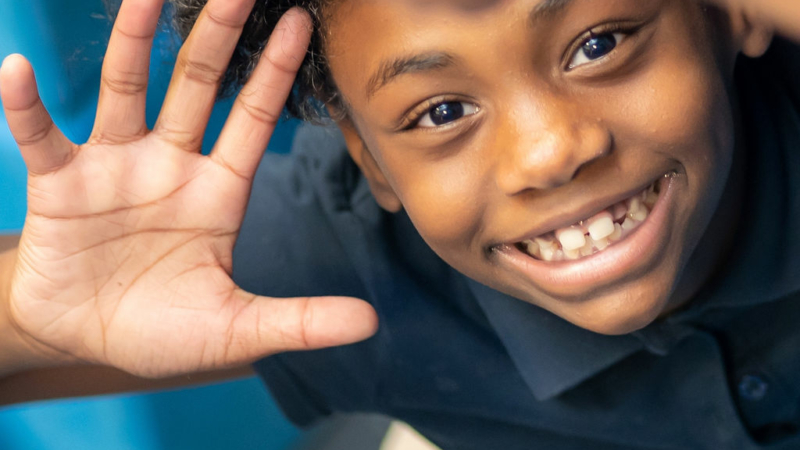
50/50 Immersion
Because mastery of the spoken and written language is critical to success in all subject areas, Sela PCS will engage a rigorous and balanced curriculum in both languages.
In homerooms from PreK 3 to 4th grade, Sela PCS uses a 50/50 model of language immersion, with half of all classroom activities in English and half in Hebrew. Each classroom has one Hebrew teacher and one English teacher. In PreK 3 to 1st grade, students will acquire the vocabulary and proficiency in Hebrew to prepare them for the next grade, and in 2nd grade and up, students begin to read and write in Hebrew. In 5th grade, students study Hebrew as a foreign language with a dedicated block of time. When students graduate Sela, they have the opportunity to take Zoom Hebrew classes with one of our teachers.
The Proficiency Approach
Sela PCS uses the Proficiency Approach in its 50/50 Language Immersion model. Proficiency is an approach used in teaching a foreign language that aims to assist learners in developing their ability to perform in the learned language in four skills: Reading, Writing, Listening, and Speaking. The goal of the Proficiency Approach is to promote the learners’ functional abilities to a fixed set of criteria. By describing the nature of each level of performance in each language skill, the guidelines provide us with the tools to create a path for our learners to move from one stage to the next.
English, Math, Science and Social Studies
Along with all public and public charter schools in the District of Columbia, Sela PCS follows the Common Core State Standards (CCSS) for English Language Arts and Mathematics. In Kindergarten through 5th grade, Sela PCS builds the foundation for successful readers and writers through the use of ReadyGEN, and in math, students follow Eureka Math2.
Sela PCS bases its science curriculum from the national Next Generation Science Standards and includes a school garden component in some grades. The Sela PCS social studies program is designed around the concepts of democracy and diversity and aims to help students to make sense of the world in which they live, make connections between major ideas and their own lives, see themselves as members of the world community, and understand, appreciate, and respect the commonalities and differences that give the United States character and identity. Students also learn about Israeli Studies.
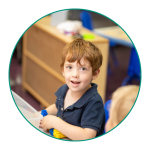
Social/Emotional Learning
Sela PCS uses Responsive Classroom as a means of creating collaborative classroom environments where all members of the classroom community take responsibility for their actions and focus on the process of learning. At Sela, teachers use the Second Step curriculum, which is designed to increase student success and decrease behavioral concerns by promoting social-emotional competence and self-regulation. Lessons in the Second Step program are age appropriate and sequential, covering four main topics: skills for learning, empathy, emotion management and problem solving.
By Grade Level
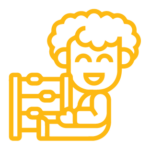
Pre-Kindergarten:
Our Pre-Kindergarten students engage in a variety of activities in both Hebrew and English following our 50/50 Immersion Model:
- SecondStep – social-emotional activities to build self-regulation and empathy
- Fundations – activities to support students’ emerging understanding of phonics and written language skills
- Morning Meetings in English twice per week and Hebrew three times per week
- Two half-hour recess/movement periods per day outdoors (weather-permitting)
- Small group center-time with concurrent Hebrew and English activities
- Nap/Quiet Rest Time after lunch
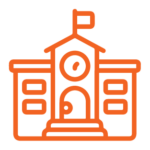
Kindergarten to 4th:
Our Kindergarten to 4th Grade students engage in a variety of activities in both Hebrew and English following our 50/50 Immersion Model:
- Morning Meetings in English twice per week and Hebrew three times per week to address social-emotional development
- 70-Minute Hebrew literacy block
- 70-Minute English literacy block
- 75-Minute Math block conducted in both English and Hebrew
- Daily recess
- Daily “Special” Activity – Phys Ed, Art, or Music and Library
- Alternating science/social studies periods corresponding to English literacy units
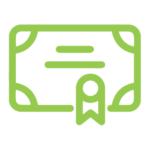
Grade 5:
On any given day, our students in grade 5 engage in a variety of activities in both Hebrew and English following a model with Hebrew as a foreign language:
- 60-minute Hebrew literacy block
- 70-minute English literacy block
- 75-minute Math block
- Daily recess
- Daily “Special” Activity – Phys Ed, Art, or Music and Dance (in English and Hebrew)
- Alternating science/social studies periods corresponding to English literacy units